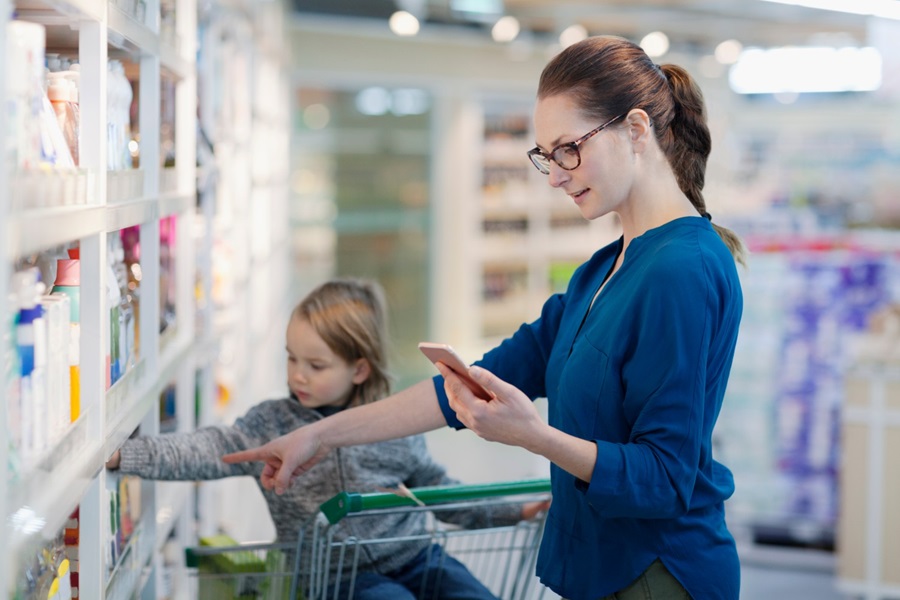Season 1 of ‘Our Lives During COVID-19’ was a rollercoaster. We hoarded and stocked up on pasta and frozen food. Those who could afford it equipped themselves with better technology. We learned how to bake bread, washed our hands like surgeons, and tried complicated recipes. Online grocery shopping is more practical than we thought, but it’s still fun to go to a real store sometimes. And we appreciate our local stores and communities more. After 6 months, we’re no longer adapting: we have new habits, with knock-on effects for brands and retail. A perfect setup for Season 2.
From overlooked, to the star of the show
Let’s start with ecommerce. Before the pandemic, brands were already building teams around online shopping, very often focused around one or two biggest online platforms. And while some were moving fast, many were struggling to even get budget approval to build out ecommerce. I know several large brands where the Digital Commerce team numbered one person.
During the first 2 months of the pandemic, ecommerce grew by the same amount as in the 5 previous years. Those ecommerce team budgets …? Approved. But as anyone in the digital commerce space will tell you, ecommerce is not one thing. Shoppers have as many different reasons for going to one ecommerce store vs another as they do for shopping at different bricks and mortar retailers. There are more differences between selling on Amazon vs Facebook vs Carrefour.com than there are between physical supermarkets.
Brands must identify which ecommerce platforms to prioritise, by understanding shopper priorities and the reasons for store choice at a category level. Start by prioritising the platforms and SKUs that bring the fastest growth.
The plot thickens
Changes in the shopper-to-store relationship are attributable to both sides and not just about hygiene protocols. If stores feel more spacious, it’s because they are: there are fewer shoppers per week and many retailers have widened aisles and reduced “clutter” (aka our valuable free-standing displays). In many categories, there are actually fewer items on the shelves.
At the height of the pandemic and struggling with logistics, many retailers made more profit with fewer items on the shelves: a very appealing proposition they would love to see as the new normal. Currently many consumer product companies are getting pressure from retailers to cut product assortment, a prospect they are none too thrilled about.
At first glance this appears more normal than new: retailers and manufacturers have been negotiating on SKU listings for many years. Now retailers feel they have the proof that less is more. Not so fast.
New experiences, new priorities
Kantar data shows some new consumer habits that indicate SKU rationalisation can work but needs to be played carefully. Doing something for the first time is the main barrier to behaviour change, and Kantar’s COVID-19 Barometer reveals that during the pandemic:
- 49% of consumers have discovered new brands since the pandemic started
- Cooking has become more elaborate as people discovered more time and new recipes for meals and even cocktails.
- Many shoppers are visiting new stores, and intend to continue shopping there – not just online (43%), but in physical stores (37%) as well
- 70% think Local is more important – for practical and emotional reasons
Consumers are looking to find more and different products, and 49% say they are comfortable going to another store to find their preferred item or brand. Brands and retailers need to work out which items to place locally and which SKUs will sell best in different ecommerce stores – as well as how to align the shopper experience between the channels. This is no small task; Kantar’s CX+ Retail 2020 revealed that only 24% of grocery shoppers think their grocery retailer makes it easy to combine online and offline shopping, despite this being one of the top 3 drivers of grocery shopper satisfaction.
This is the Omnichannel challenge: making ‘less is more’ work locally and at scale, while re-inventing the online-offline ecosystem to work better for brands, retailers – and shoppers. Season 2 is going to be interesting, and Season 3 is already in the works.


